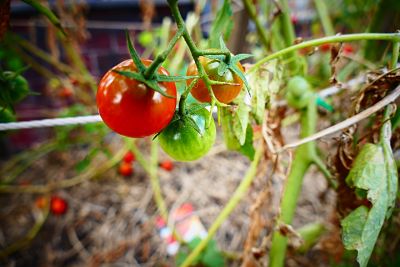
When it comes to flavor and taste, few things compare to home-canned produce fresh from the garden. The home canning and preserving season will be here before we know it, so now is a good time to start preparing.
“Preserving food from your garden or orchard can be a good way to enjoy the bounty of your garden and orchard all year round,” says Mary Meehan-Strub, Professor, Department of Family Development, La Crosse County-UW-Extension. “But be sure to follow research-tested recipes for safe, high quality food that your family will enjoy.”
Recipes that are not precise, that call for “a pinch” of this ingredient or “a pinch” of that ingredient; recipes that are not tested in a laboratory; or those that contain outdated or inaccurate canning information, can result in products that may be unsafe to consume. UW-Extension offers three general guidelines for safe food preservation.
- Inspect and repair any food preservation equipment at the beginning of the season. Now is a good time to inspect canners or food dehydrators to make sure all equipment is in working condition. Start now to collect approved canning jars and lids for use during the season. Canning jars that use two-piece, self-sealing metal lids are recommended for home canning. Jars should be free of nicks or scratches. A “must” every canning season is new flat lids. Metal screw bands that are not bent or rusted can be reused.
- Have dial-gauge pressure canners tested for accuracy. A pressure canner is essential for canning low-acid vegetables, meats, fish and poultry. Pressure canners come with either a dial-gauge or a weighted-gauge. Dial-gauge pressure canners should be tested each year for accuracy. Most county UW-Extension offices offer free dial-gauge testing; call ahead for availability of this service.
- Always follow an up-to-date tested recipe from a reliable source. This is perhaps the most important step in preparing for home food preservation, according to Meehan-Strub. Cookbooks and old family recipes are not reliable sources of tested recipes that meet current food safety recommendations.
“More tomatoes are home-canned than any other product, and home-canned tomatoes can be so delicious. Many people are still unaware that tomato-canning recommendations changed dramatically way back in 1994,” says Meehan-Strub. “I answer questions every year from consumers who are not aware that you must add acid to home-canned tomato products to ensure safety. This is just one example where even though it’s tempting to return to a family-favorite recipe, it’s important to update your canning recipes as guidelines change.“
You can find the most up-to-date recipes, how-to videos, online lectures and more to help you safely can fruit, jams and jellies, meat, pickles, salsa, tomatoes, and vegetables; plus information on freezing fruits and vegetables at the “Safe and Healthy: Preserving Food at Home” blog at https://fyi.extension.wisc.edu/safepreserving.
“Food safety is, and should be, a primary concern when home canning any type of food, from pickles to meat. The University of Wisconsin-Extension sets itself apart in providing up-to-date research-based information,” says Meehan-Strub. “Begin the food preservation season by updating your resources so that you can be sure that you are preserving safe, high quality food for your family to enjoy.”



